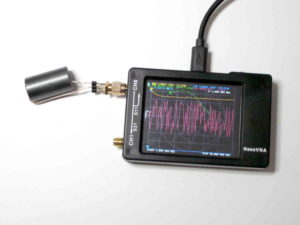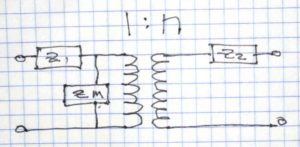Rhode & Schwarz describe a test for accuracy of a VNA at T-Check Accuracy Test for Vector Network Analyzers utilizing a Tee-junction.
A nanoVNA-H PCB v3.3 (modified to fix decoupling problem on mixers) was calibrated from 0.1-900MHz using the supplied parts.
A T piece with extra 50Ω termination was inserted between the supplied original cables and s11 and s21 captured. The assembly was turned around and measured again to capture s22 and s12 (though recorded as s11 and s21). The two files were merged to obtain a full two port bothways .s2p file.
The T-Check value was calculated and is plotted here in VNWA.
Above, the T-Check results are not stunning at all, the ideal result is 1.0 at all frequencies. Rhode and Schwarz recommend that more than 15% error is unacceptable… of course that is in a commercial grade VNA.










